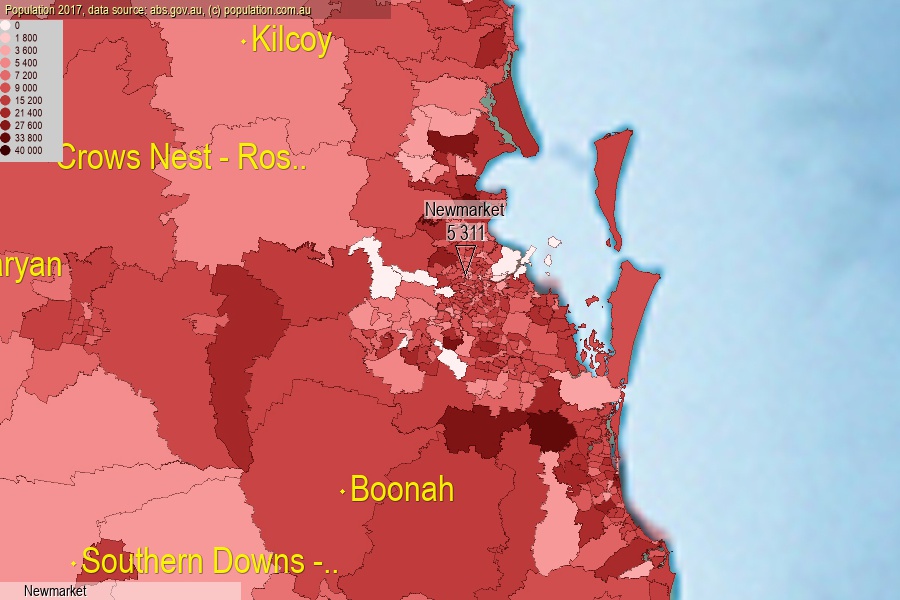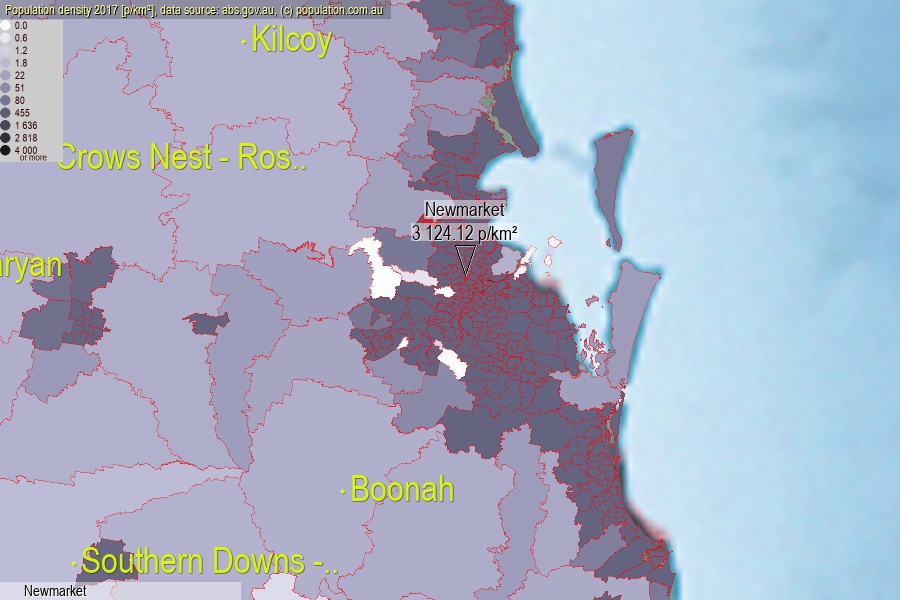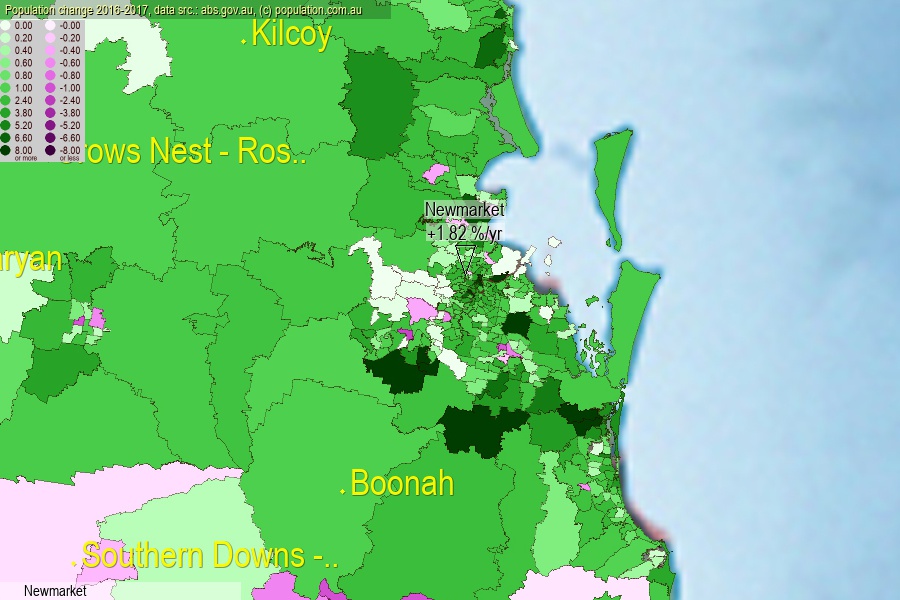 population.com.au
population.com.auLast official estimated population of Newmarket (as Statistical Area Level 2) was 5 311 people (on 2017-06-30)[2]. This was 0.02% of total Australian population and 0.106% of QLD population. Area of Newmarket is 1.70 km², in this year population density was 3 124.12 p/km² . If population growth rate would be same as in period 2016-2017 (+1.82%/yr), Newmarket population in 2025 would be 6 136. [0]



Click to enlarge. Newmarket is located in the center of the images.
Population [people], population density [p./km²] and population change [%/year] [2]
View borders » (new window) [4]
[1991-1992] -0.50 %/Yr.
[1992-1993] +0.47 %/Yr.
[1993-1994] +3.48 %/Yr.
[1994-1995] +2.88 %/Yr.
[1995-1996] +2.63 %/Yr.
[1996-1997] +1.60 %/Yr.
[1997-1998] +1.21 %/Yr.
[1998-1999] +0.70 %/Yr.
[1999-2000] +1.73 %/Yr.
[2000-2001] +1.83 %/Yr.
[2001-2002] +3.19 %/Yr.
[2002-2003] +0.97 %/Yr.
[2003-2004] +1.99 %/Yr.
[2004-2005] +2.35 %/Yr.
[2005-2006] +1.15 %/Yr.
[2006-2007] +1.06 %/Yr.
[2007-2008] +0.78 %/Yr.
[2008-2009] +1.33 %/Yr.
[2009-2010] +0.94 %/Yr.
[2010-2011] +1.54 %/Yr.
[2011-2012] +3.28 %/Yr.
[2012-2013] +2.20 %/Yr.
[2013-2014] +3.65 %/Yr.
[2014-2015] +1.21 %/Yr.
[2015-2016] +0.87 %/Yr.
[2016-2017] +1.82 %/Yr.
[0] Calculated with linear interpolation from officially estimated population
[1] Read more about SA2 and Australian Statistical Geography Standard (ASGS) on abs.gov.au
[2] Population data from Australian Bureau of Statistics (Population and density: 2017; change: 2016-2017)
[3] Digital Boundaries: Australian Statistical Geography Standard (ASGS) 2016.
[4] Border coordinates are simplifyed using Ramer-Douglas-Peucker algorithm.